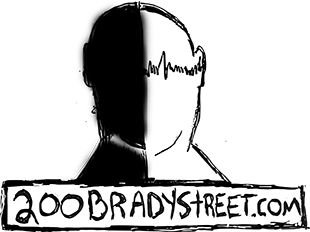When the Ticket Comes with a “Victim” Fee Who’s the Victim?
Automated camera tickets in Ontario add a victim fine surcharge, a fee more often linked to criminal sentencing. It’s meant to fund services for victims of crime, but its use on owner liability traffic fines raises questions about consistency, purpose, and transparency.
The Hidden Fee on Camera Tickets No One Talks About
Automated camera tickets in Ontario add a victim fine surcharge, a fee more often linked to criminal sentencing. It’s meant to fund services for victims of crime, but its use on owner liability traffic fines raises questions about consistency, purpose, and transparency.
Understanding the victim surcharge on automated enforcement tickets
In Ontario, automated speed enforcement (ASE) and red light camera tickets come with an added line item: a victim fine surcharge. This is a fee collected by the courts to help fund programs and services for victims of crime. While the purpose may sound straightforward, its application to tickets issued by machines, with no direct complainant, raises questions about logic, consistency, and transparency.
What is a victim surcharge and where does it come from?
The victim surcharge is rooted in the Criminal Code of Canada (Section 737) and implemented provincially through regulations such as Ontario Regulation 161/00: Victim Fine Surcharges. In criminal court, it’s added to most convictions as a percentage of the fine, or as a set amount, with revenue directed toward victim services programs.
In Ontario’s Provincial Offences system, the same surcharge is applied to certain fines, including automated enforcement tickets, and is listed separately on the ticket.
Why is it applied to automated enforcement tickets but not parking tickets?
Here’s where the comparison gets interesting. In Ontario, most municipalities process red light and speed camera tickets administratively, much like parking tickets. Both are issued to the registered owner, not a specific driver, and neither carry demerit points.
The difference: parking tickets do not have a victim surcharge. Automated enforcement tickets do, even though the process, enforcement model, and owner liability are similar.
Who is the “victim” in a camera ticket case?
Unlike criminal cases where there is an identifiable victim, an automated enforcement ticket is triggered by a device capturing a vehicle in violation. There is no specific complainant. Supporters of the surcharge argue that the funds still benefit victims of crime through provincial programs. Critics question whether the link between this type of offence and victim compensation is clear or logical.
How does Ontario compare to other jurisdictions?
| Jurisdiction | Victim Related Surcharge? | Applied to ASE or All Traffic Fines? | Notes |
|---|---|---|---|
| Ontario, Canada | Yes (Victim Fine Surcharge) | Automated enforcement tickets (speed, red light) | Listed separately on ticket; regulated by O. Reg. 161/00 |
| Other Canadian provinces/territories | Yes (Federal Victim Surcharge) | Applies broadly to Criminal Code convictions, not specifically ASE | Not necessarily itemized on traffic tickets |
| U.S. states | Yes (Assessments/Surcharges) | Often apply to all traffic/court cases, regardless of automation | Varies by state; many states require a victims fund surcharge |
Bottom line: Ontario stands out in explicitly itemizing a victim surcharge on automated enforcement tickets, even though the tickets are handled like parking infractions in other respects.
Where does the money go?
Victim surcharge revenue in Ontario is intended to support programs for victims of crime. According to provincial statements, the funds are deposited into a special purpose account for victim services. However, public facing reporting on how much is collected from automated enforcement specifically, and how it is allocated, is not readily available. This lack of granularity fuels public curiosity and skepticism.
What policy questions does this raise?
- Should a surcharge designed for criminal sentencing be applied to automated traffic fines?
- Why is there no requirement for proof of ticket delivery when payment obligations are attached?
- Could modern camera systems identify the driver instead of the vehicle, and would that change how surcharges are applied?
- Should revenue from automated enforcement be transparently tracked and reported by offence type?
Related Questions
- Are traffic cameras just money grabs?
- Where can I find the legislation behind ticket fines and surcharges?
- How does governance protect against misuse of enforcement revenue?
Take the Next Step
This platform is being built to bring transparency to enforcement systems, including how fines and surcharges are applied. While nothing is live yet, you can explore the structure now and be part of the conversation as it develops.
